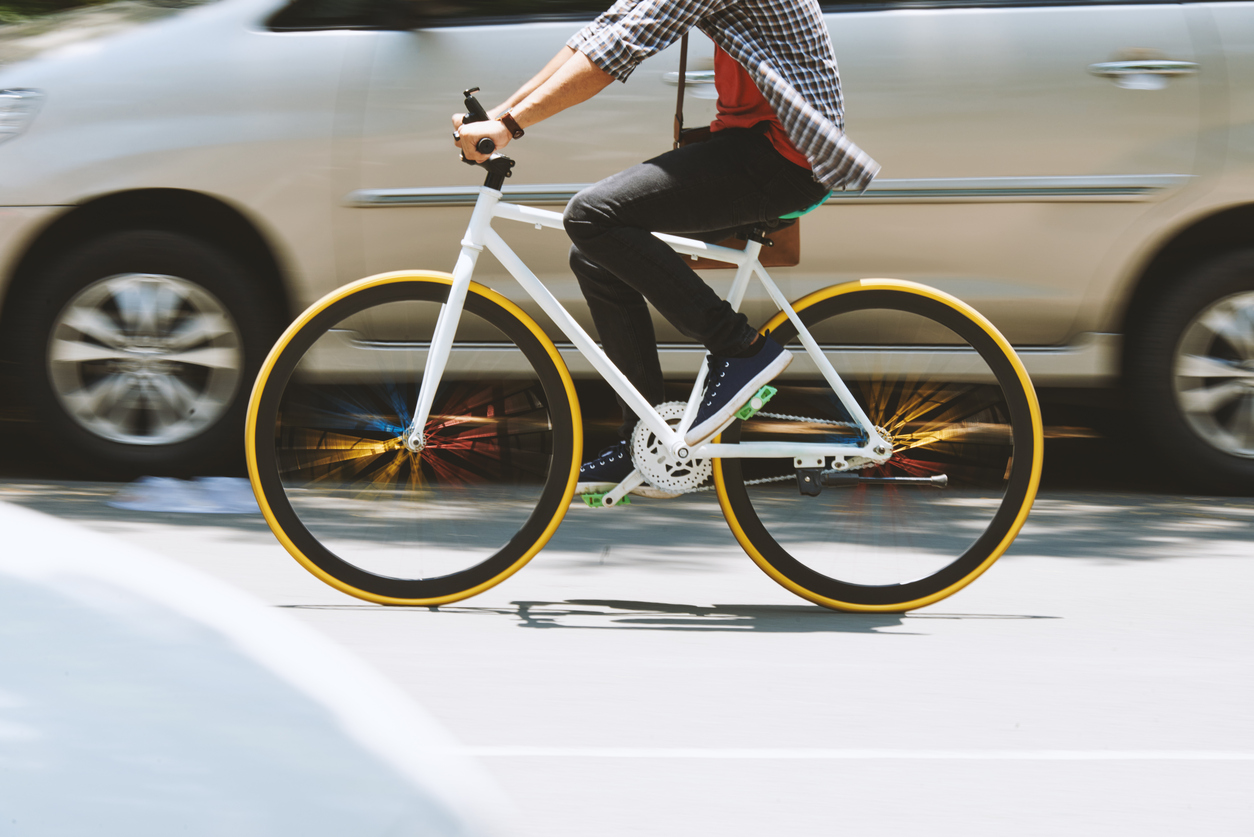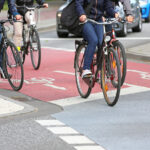Our Mission
At Advocacy Advance, we strive to help local communities and organizations fight to persuade their states and local governments to embrace bicycle and pedestrian projects. Even though funding is limited, we can help you show your local governments how to extend those federal funds and make the most of infrastructure projects. We find that highlighting the demand, cost-efficiency, and benefits of bicycle and pedestrian projects is the key to success.
Why is Increasing Accessibility to Biking & Pedestrian Infrastructure Important?
Choosing to bike or walk, rather than drive a car, can have tremendous benefits for individuals, communities, and the environment. Studies show that simply giving citizens access to safer infrastructure (i.e., protected bike lanes, raised pedestrian walkways, dedicated signals, and intersections) can increase the number of people who use it. Not only does it help cyclists and pedestrians, but it also helps to ease local car traffic - a big hurdle to increasing bicycle usage is safety concerns. As the saying goes, “if you build it, they will come.” The more people who choose safe methods of transportation, the greater the overall benefits.
Another benefit is a decrease in litigation over bicycle accidents. More and more bicyclists are taking their cases to court to get compensation after an accident. This increases insurance premiums, burdens the legal system, and causes productivity losses in the workplace. "We're definitely seeing an increase in bicycle accident cases both in New York and across the country," says Michele Mirman, a personal injury lawyer in New York, NY who handle bicycle injury accidents. "Investing in infrastructure would go a long way to avoiding these lawsuits altogether," she adds. If you have been hurt in a bicycle accident, you might want to pursue a personal injury claim against the at-fault driver.
Cities should also consider increasing accessibility to biking and pedestrian infrastructure because research shows that it’s what millennials want. Millennials, or those individuals between the ages of 18 and 34, will soon have greater spending power than any other generation. Young people will soon be looking to move out on their own, which can mean searching for an apartment to rent or home to buy.
Communities can attract potential renters and buyers by simply giving them what they want: bike lanes and walkable communities. Bringing in the millennial population can increase revenue, create jobs, and boost the local economy. That’s something every community should want to work toward.
Nationwide Demand for Safe Infrastructure is Growing
Millennials aren’t the only group who are interested in safe infrastructure and alternatives to traditional modes of transportation. An increasing number of Americans of all ages support safe infrastructures in their communities. This is evident when we look at the number of Americans who are opting to ditch their cars for their daily commute. Since 2000, the number of commuters choosing to bike or walk has increased by more than 51 percent. Studies show that this number is only continuing to rise.
In fact, the government even knows this to be true. The U.S. Department of Housing and Urban Development (HUD) has stated that “more and more Americans nationwide prefer to live in areas that are well served by a variety of transportation options” and “communities where residents can walk and bicycle, in particular, are increasingly in demand.”
While HUD acknowledges that demand for safe infrastructure is growing and that many communities have jumped on board to do what they can to satisfy that demand, it has not taken sufficient steps to provide communities with appropriate funding. It’s important that the government is aware of the demand for walkable and bikeable communities; this makes the success of advocacy efforts that more likely.
How Can We Achieve Our Goal?
Americans want safe infrastructure in their local communities. Many local communities and governments seem to be on board with embracing the trend. The federal government knows that there is a demand for dedicated bicycle and pedestrian infrastructure. However, there is a disconnect between this knowledge, funding, and implementation.
It is our goal to bridge this gap and aid communities in their quest for safe infrastructure. We believe that we can achieve this goal through:
- Education: learning about policy that affects infrastructure and understanding how to have a policy-driven discussion with leaders.
- Quick Build Campaigns: garnering support and showing local lawmakers how safe infrastructure projects can be a tremendous benefit to the community.
- Ballot Initiatives: bypassing lawmakers and bringing the issue of safe infrastructure directly to the people with a vote.
Quick Build Campaigns
While local communities and governments are generally open to considering safe infrastructure projects, they are often hesitant to commit funds to an unproven concept. In theory, embracing safe infrastructure can reduce traffic accidents, increase traffic speeds, and, among other things, increase public health. Statistics that support these ideas are great, but each community will be different.
Quick build campaigns allow communities to see the impact dedicated bicycle and pedestrian infrastructure will actually have. Safer and/or dedicated bike and pedestrians lanes can easily be implemented with a few buckets of paint, temporary signs, and some inexpensive planters. Seeing safe infrastructure projects in action can help to convince those skeptical of the impact and even persuade community members to swap their vehicle for a bike.
These temporary campaigns are inexpensive and do not take a great deal of time or resources. Communities can see what works and then dedicate funding to making those changes permanent.
Ballot Initiatives
What if lawmakers just won’t listen? Sometimes our representatives seem more inclined to protect the interests of their donors rather than their constituency. Ballot initiatives can be a helpful solution to bypassing stubborn government officials.
Advocacy Advance can help you devise a proposal to put to a vote. Ballot initiatives require a lot of hard work, research, and dedication to the cause. However, presenting a strong and persuasive argument about why funding should be allocated toward safe infrastructure projects can lead to a positive result. The local community has the power to vote to impose new taxes and/or force allocation of residual funds to projects they want to see happen.
Fighting for Safe Infrastructure in America
Americans want safe infrastructure. Communities are generally willing to consider proposals for dedicated bicycle and pedestrian projects, but are often hesitant to allocate funds necessary to realize necessary changes. The federal government knows that the desire for walkable and bikeable communities is on the rise, but has failed to provide local governments with an appropriate allocation of tax dollars to develop that infrastructure.
Advocacy Advance can help you get safe infrastructure in your local community. We will help you gather research and garner community support, draw up proposals, and find funding the is necessary to realize your goals. Together, we can make the nation a safer and more enjoyable place for everyone.


